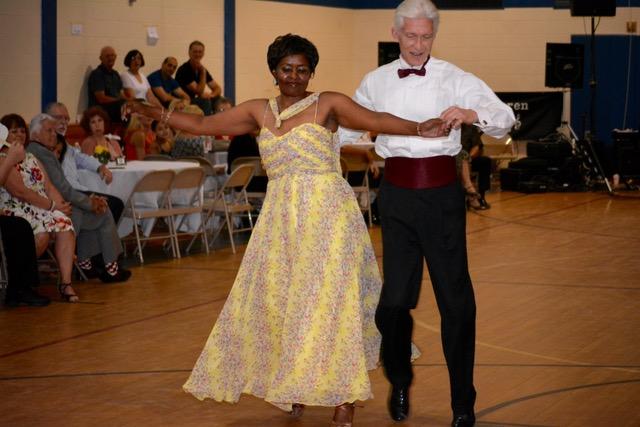Emotions play a significant part of our lives. Human beings could take control of their lives by understanding the emotions that are driving them at any moment. “Emotional intelligence” is the ability to identify and manage your own emotions and the emotions of others. I believe that each individual is born with emotional intelligence and if left alone in the right environment, emotional intelligence would sprout and branch out and bloom ready to be harvested in time of need. Individuals would then be able to sieve through their emotions and make the right decisions about love, anger, fear, relationships and enhance their health in the process. This, however, is not possible because our upbringing, and the social environment we live in, and the way we are governed molds our lives and inhibits our emotional intelligence. As a result the social evils of depression, addiction, illness, religious conflict, violence and war outnumber the social norm of creativity, love, understanding and fulfillment by a wide margin. Parents play an important role in inhibiting or enhancing the development of emotional intelligence development. Social environment and the way we are governed play an important role in the suppression of emotional intelligence. Individuals’ understanding emotional intelligence is the key to developing it and being able to recognize situations that inhibit emotional intelligence.
In order to recognize situations that inhibit or enhance emotional intelligence, Individuals need to understand the fundamental characteristics of emotions. In an article by psychologists Peter Salovey and John Mayer “The four branches of Emotional Intelligence” (1990) are, perceiving emotions, reasoning with emotions, understanding emotions and managing emotions. These two psychologists argue that perceiving emotions accurately involves listening to both the verbal and body language. Reasoning with emotions involves using emotions to prioritize what we pay attention and react to. Understanding emotions involves being able to interpret emotions, for example when your boss is angry, is he angry at you or is he projecting anger after an argument with his wife earlier in the day. Managing emotions effectively, involves, regulating emotions, responding appropriately and responding to the emotions of others. In other words are you mindful of your friend’s, peer’s and family’s feelings when you speak or act. According to Salovey and Mayer, the four branches of their model are, “arranged from more basic psychological processes to higher, more psychologically integrated processes”. This means that emotional intelligence is applicable in every aspect of life.
In their quest to nurture their children, parents loose the insight that parenting is one aspect that calls for emotional intelligence and when the parents don’t understand it, their negative actions inhibit emotional intelligence in their children. Daniel Goleman calls it “The Family Crucible” in his book, “Emotional Intelligence, Why It Can Matter More Than IQ” (1995). Goleman argues that, it is crucial for parent to accurately perceive the emotions of their children and correctly interpret them. Some parents ignore the feelings of their children, for example when a child flares in tantrums, the parent ignores it in the hope that it will blow over, this, inhibits the child to learn self control. But a parent who seizes this emotional moment to help the child learn a lesson of emotional competence, enhances the child’s confidence in mastering his behavior. Some parents do notice the child’s feelings but let the child handle the feelings in whatever way the child chooses, even if it is violent, the child grows without knowing the alternative emotional response. But a parent who shows the child an alternative possibility instills a sense of curiosity hence discovery. Some parents show no respect for their child’s feelings they criticize and give harsh punishments, oppressing the child into bottling up their feelings inside and not letting them out. This child may appear in control of their emotions on the outside but are seething on the inside. But a parent who shows respect for their child’s feelings listens to them giving them the ability to be engaged in communication and giving them a sense of being understood and trusting the adult. My interpretation of “The family Crucible” is a pot that churns two types of children. These two types of children, one whose emotional intelligence is enhanced and one whose emotional intelligence is inhibited go into the society armed with different skills.
Every child looks forward to the day they will leave the “family crucible” and be on their own. This is when their emotional intelligence is tested. They experience peer pressure, they have to make and keep relationships, they have deadlines to meet and have decisions to make away from their parents. They find that relationships are a work in progress, careers are a constant challenge and that the education systems have little to offer in emotional literacy. They find they have to dig deep within themselves to cope with the emotional turmoil that is packaged with the adulthood packet. In her book, “Mindset: The New Psychology Of Success How Can We Learn To Fulfill Our Potential”. (2007), Carol S. Dweck argues that Mindsets play an important part in developing individual emotional competence. She asserts that there are two mindsets, a fixed mindset that sees what happens as a direct measure of their competence and worth and a growth mindset that sees what happens as a challenge that needs to be conquered by cultivating the simple basic qualities you have through your efforts. Individuals therefore need to understand that emotional intelligence can be inhibited by a fixed mindset and enhanced by a growth mindset.
Human beings need to engage in activities that enhance their emotional intelligence. This will not only improve your emotional competence but will enhance your overall health. Ballroom Dancing is one of the most emotional activities that I have had a chance to engage in. You learn your foot patterns, body movements, how to hold your frame and but the most important piece is putting emotions into the dance. The next most important part is reading your partner’s body language so you can move as one. The third important part is listening to the music and letting the musicality move you on the dance floor. In his 1985 doctoral dissertation, “A study of emotion: developing emotional intelligence; self-integration; relating to fear, pain and desire (theory, structure of reality, problem-solving, contraction/expansion, tuning in/coming out/letting go)”, Wayne Payne points out that music is one of the creative ways that emotions mature. I find that I my innermost vitality is expressed in the staccato beats of the tango. My innermost peace is expressed in the slow smooth beat of the Bolero and my playful “child’ expressed in the swing or cha-cha-cha. My dance instructor says the hardest thing that he had to do was put emotions to a dance but he learned. He is a wonderful dancer. He is a wonderful instructor but putting emotions into a dance rhythm is something he can’t teach you. You’ve got to feel it and let the music carry you through. My dancing instructor is emotionally intelligent. He teaches and dances with a lot of dance-partners day in day out. It is interesting to watch him take a partner read and interpret that partner’s emotions and dance accordingly managing to bring out the best in each partner regardless of the dance partner’s level of dance. It is a remarkable skill to watch. This emotional flow or “let up” is one of the by products of dancing. Dancing gives me a chance to let go of my suppressed emotions and lets me interpret them.
Psychologists believe that mass suppression of emotion throughout the civilized world has stifled our growth emotionally, leading us down a path of emotional ignorance. In the final part of her book, “A Small Place” Ms Jamaica Kincaid, analyzes the people of Antigua who have been oppressed for many years by the colonialist, suppressing their emotional intelligence into oblivion. For many years Antiguans were governed by the British and served their masters without questioning. Antiguans then welcomed independence from the British only to find that they are oppressed by the Antiguan Government in power. Ms Kincaid writes that the Antiguans see what is happening to their country but do not act on it. The Antiguans are so oppressed to even notice the beauty of their Island. With emotions so suppressed, “It is as if the beauty of the sea, the land, the air, –the trees, the people, the sound they make –were a prison”(79).
When I mention the term “Emotional Intelligence in many social circles I get the response, “What is Emotional Intelligence?” In this paper, I argued that Individuals’ understanding of emotional intelligence is the key to developing it and being able to recognize situations that inhibit emotional intelligence. I showed that parenting is one of the most important aspects of emotional intelligence as parents nurture their children to become emotionally competent adults. I showed how fixed mindsets can inhibit emotional intelligence growth and that it is important to modify your mindset to handle emotional situations. I showed how growth mindsets always work hard to achieve emotional competence because in their minds there is always room for improvement. I asserted how engaging in creative and artistic activity enhances emotional intelligence and ultimately enhances individual health by letting go of suppressed emotions. In summary, understanding emotional intelligence will go a long way in making the world we live in a better place to live.
Work Cited
Dweck, Carol S. Mindset: The new Psychology of success How can we Learn to Fulfill our Potential. New York: Ballantine Books. 2007. Print.
Goleman, Daniel. Emotional Intelligence Why it can matter more than IQ. New York: Bantam.1995. Print.
Kendra, Cherry. What is “Emotional intelligence” definitions, history and measures of Emotional intelligence. psychology.about.com. Web. 16 April 2015.
Kincaid, Jamaica. A Small Place. NewYork: Rarrar, Straus and Groux, paperback edition. 2000. Print.
Mayer, J. D. & Salovey, P. (1997). What is emotional intelligence? In P. Salovey & D. Sluyter (Eds). Emotional development and emotional intelligence: Implications for educators (pp. 3-31). New York: Basic Books.
Payne, Wayne L. (1985). “A study of emotion: developing emotional intelligence; self-integration; relating to fear, pain and desire (theory, structure of reality, problem-solving, contraction/expansion, tuning in/coming out/letting go).” A Doctoral Dissertation. Cincinnati, OH: The Union For Experimenting Colleges And Universities.
Salovey, P. & Mayer, J. D. (1990). Emotional intelligence. Imagination, Cognition, and Personality, 9, 185-211. A first formal theory of emotional intelligence, and a review of then-exisitng literature that might pertain to it.




